Guide on Swimming Pool Safety for Dogs – JOJO Pets
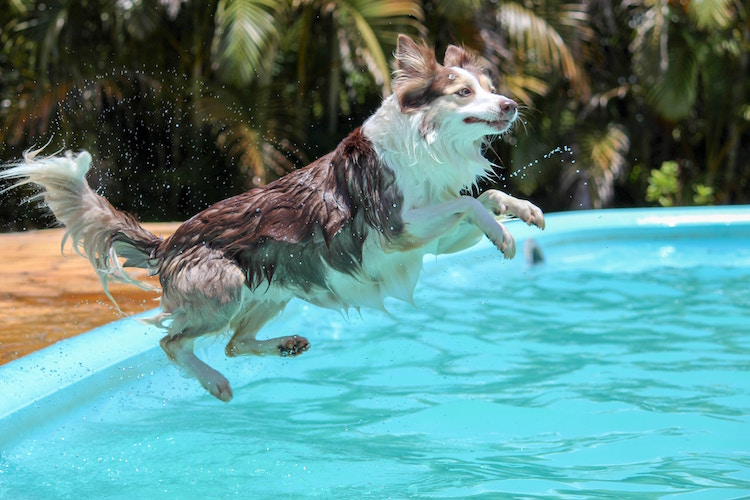
Image credit: Unsplash.com
Swimming can be an enjoyable outdoor activity for your dog, especially on hot days! It not only allows them to have fun but also serves as a low-impact exercise, promoting better conditioning and improved range of motion without straining their joints. However, ensuring your dog’s safety around the pool is of utmost importance, even if they are skilled swimmers or simply love the water.
This comprehensive guide provides essential safety precautions and tips to protect your dogs while they indulge in poolside activities.
Is Swimming Pool Water Safe for Dogs

Image credit: Freepik.com
In general, chlorine or saltwater pools are not harmful to both humans and animals when properly maintained and balanced. However, there are important considerations to keep in mind.
Chlorine can strip away natural oils from a dog’s skin, especially if they have sensitive skin or regularly engage in pool activities. This can result in skin irritation, increased itching and scratching, dry skin, and, in severe cases, skin rashes. Additionally, dogs with dark coats may experience mild bleaching, while those with light-colored coats may turn slightly greenish.
After swimming, you may notice your dog’s eyes appearing red. This discomfort may lead them to rub their eyes with their paws or against a carpet, potentially causing trauma.
Water trapped in a dog’s ears after swimming can also lead to ear infections, requiring yet another trip to the veterinarian.
Simple Steps to Protect Your Dog from Skin and Body Irritation:
- Stop letting your dog into the swimming pool if you notice any immediate reaction after swimming
- Regularly check and maintain the chemical levels of the pool water for safety
- Apply a leave-in coat conditioner with sunscreen to shield your dog’s skin and coat before swimming
- Give your dog a thorough rinse using fresh, cool water, and gently cleanse their eyes with a sterile saline eyewash after swimming
- Use a dog ear cleaner with cleaning and drying agents to rinse their ears after swimming
- For dogs with medium to long hair, reapply a coat conditioner after the final rinse, gently massaging it into their skin and combing their fur to ensure even distribution of the conditioner
Can Dogs Drink Swimming Pool Water
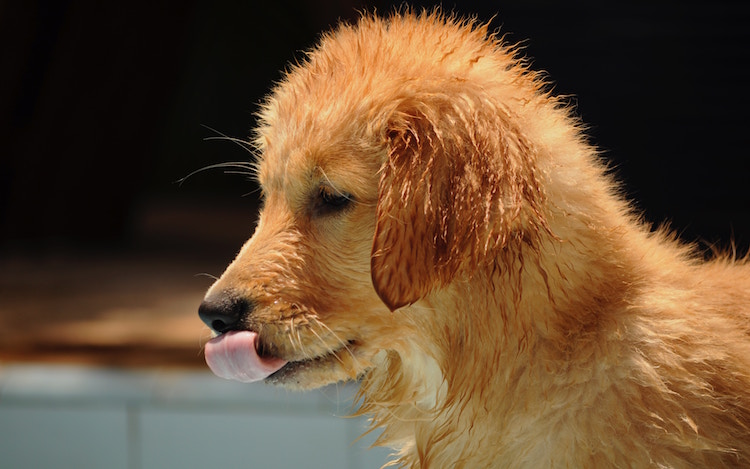
Image credit: Unsplash.com
While it’s generally safe for dogs to ingest a small amount of pool water while swimming, allowing them to drink significant quantities of chemically treated water can have adverse effects. This can result in upset stomach, vomiting, diarrhea, and, in severe cases, kidney failure. When dogs consume excessive pool water, it can lead to dangerously low sodium levels in their blood, a rare but potentially fatal condition if not promptly treated. Additionally, salt poisoning may occur if too much water is ingested from saltwater pools. It’s essential to provide your dog plenty of fresh water before and after swimming and prevent them from drinking swimming pool water.
Water Intoxication and Salt Poisoning in Dogs:
Signs of Water Intoxication:
- Bloating
- Nausea
- Vomiting
- Lethargy
- Dilated pupils
- Loss of coordination
- Drooling
- Seizures
Signs of Salt Poisoning:
- Vomiting
- Weakness
- Muscle tremors
- Seizures
If you suspect your dog has water intoxication, salt poisoning, or ingested pool chemicals, seek immediate medical attention from a veterinarian.
Never Leave Dogs Alone Near the Swimming Pool

Image credit: Unsplash.com
Regardless of your dog’s swimming abilities, exhaustion can unexpectedly affect them. An exhausted dog may experience breathing difficulties and unintentionally swallow water, leading to a condition known as pulmonary edema, where fluid accumulates in the lungs. This condition can result in respiratory distress or even cardiac arrest, which may occur hours or days after a near-drowning incident. Always supervise your dogs closely when they are near the swimming pool to ensure their safety and prevent potential accidents.
Swimming Pool Life Vest for Dogs
Does your dog require assistance while swimming in the pool? Do they tire easily during extended swim sessions, or do they appear hesitant about being in the water? A dog life vest can be the perfect solution to help your dog float comfortably and safely, instilling them with the confidence to fully enjoy swimming and playtime in the water.
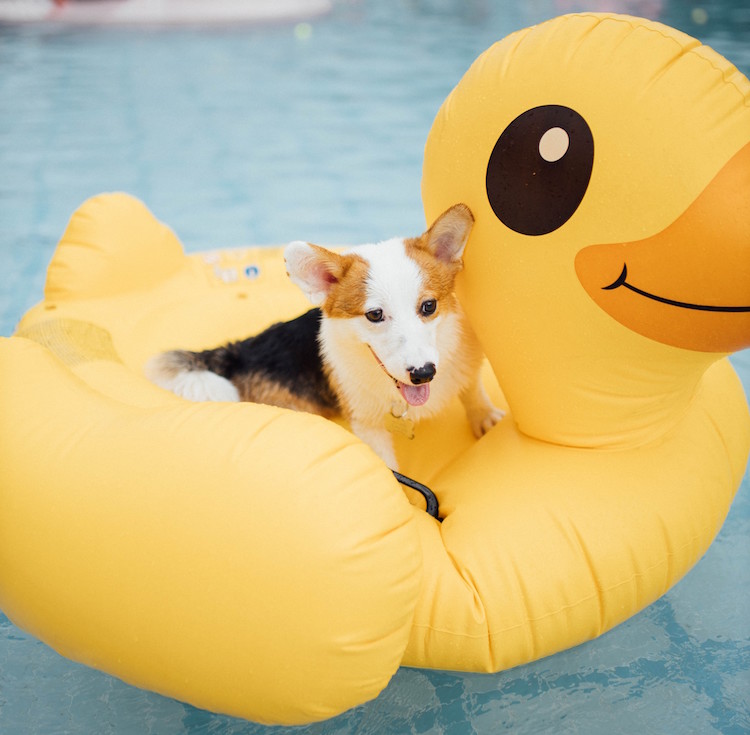
Image credit: Unsplash.com
Another excellent option to consider is a flotation device. If your dog loves water activities but tends to tire quickly or prefers a more relaxed swimming experience, a flotation device like a swimming pool float or doggy raft could be ideal. It allows your dog to spend more time in the water without feeling fatigued or anxious, ensuring a delightful and stress-free swimming pool time for your beloved dog.
Dog-Friendly Swimming Pool
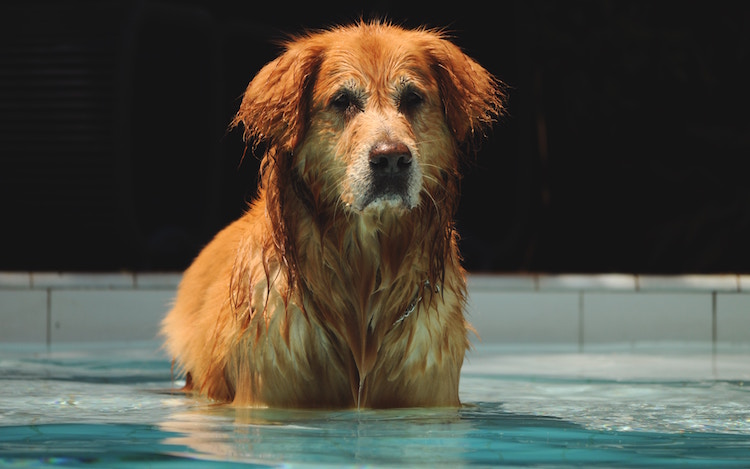
Image credit: Unsplash.com
While most dogs can swim in human swimming pools, investing in a dedicated dog swimming pool significantly improves safety and enhances the overall swimming experience for your dog.
Dog swimming pools are designed to be smaller and shallower than human swimming pools, reducing the risk of drowning and providing a more comfortable introduction to water for dogs. Just as humans start in kiddie swimming pools, dogs benefit from a less overwhelming space to begin their swimming journey.
Having a dog swimming pool isn’t only great for your pooch but also you as the owner. Dog swimming pools are much easier to maintain compared to full-sized human swimming pools. They are simpler to fill, drain, and clean, saving you time and effort.
Allowing dogs in your regular swimming pool can compromise its hygiene. Dogs don’t have the ability to clean themselves up before entering the water, and they bring dust, grass, and debris into the pool. Moreover, they continuously shed hair that lingers in the swimming pool after swimming.
Due to these factors, a single dog can introduce as much dirt as three people, necessitating more frequent swimming pool cleaning if your dog uses it regularly. Investing in a dedicated dog swimming pool can help maintain a cleaner and safer swimming environment for everyone involved.
Conclusion
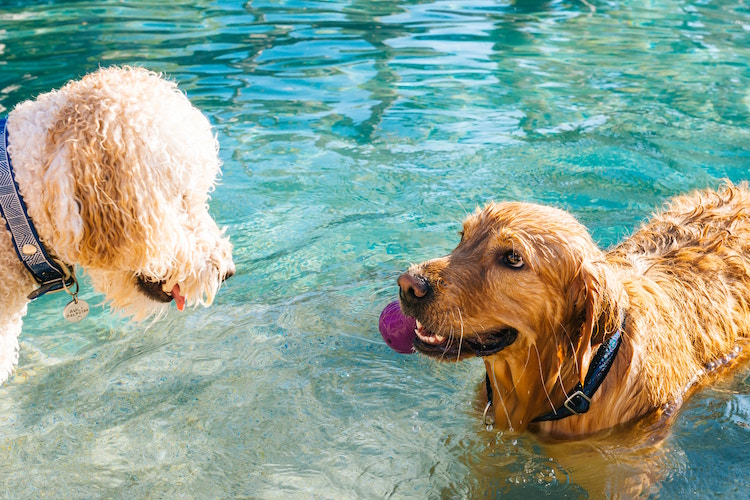
Image credit: Unsplash.com
Swimming is a wonderful form of exercise for your dog, contributing to their overall health and happiness. By providing proper supervision and being mindful of their safety, you can create an environment where your dog can frolic and doggy paddle in your swimming pool. Ensuring a balance of fun and safety allows your beloved dog to fully enjoy their time in the water, fostering a strong bond and a healthier lifestyle for both of you.
Need a ride with your pet? JoJo Pets is here for you! JoJo Pets, a Malaysian pet taxi service that provides safe and timely pet transportation to any local destination you have in mind. Let us know if you have any questions. Book a ride with us today!
JoJo Pets also offers cashless payment with their JoJo Wallet, including all major e-wallets, credit/debit card as well as online banking.
Download the JoJo Pets app today for exclusive news and offers at https://jojo-pets.com/
